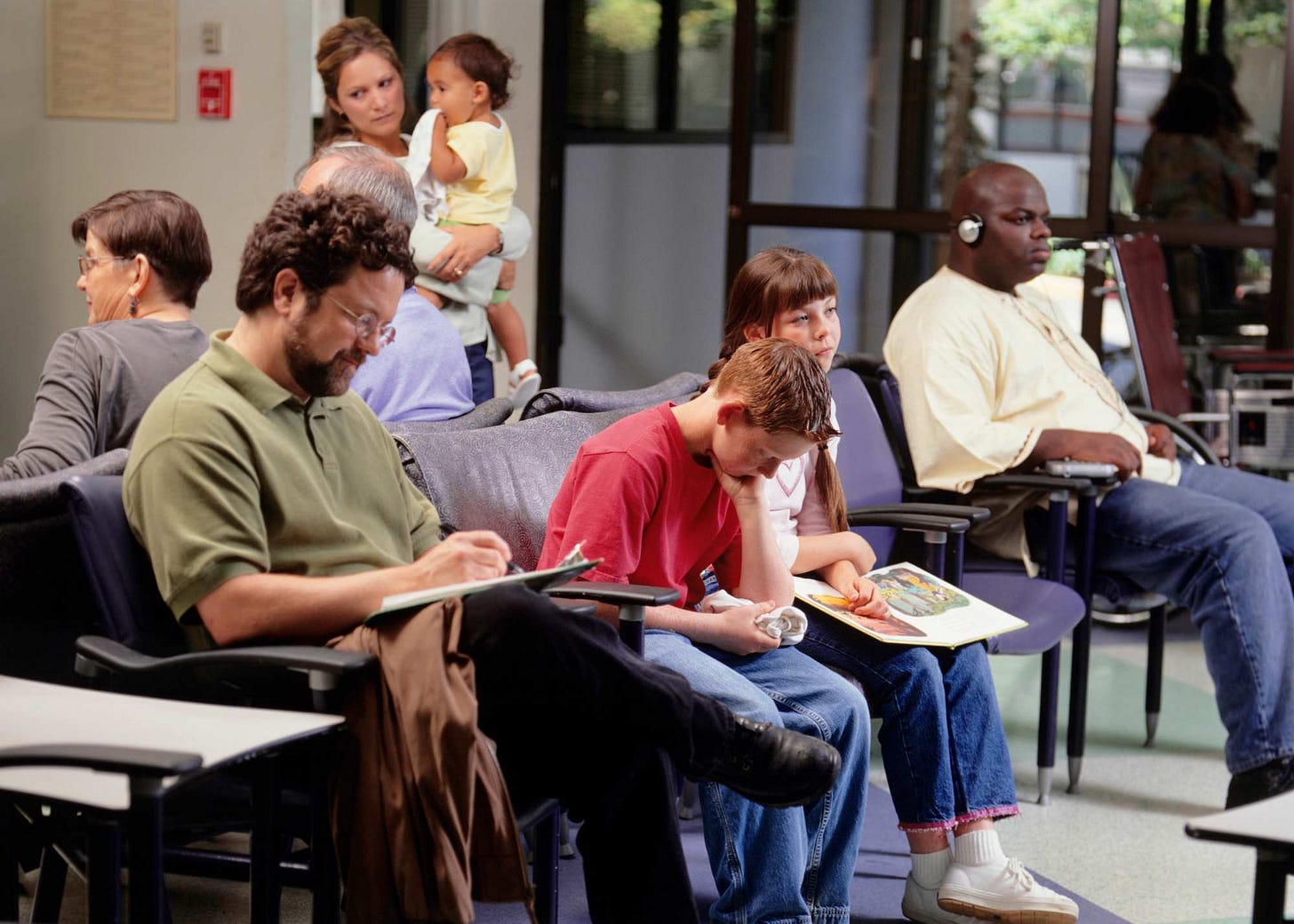Did you know it’s not unusual for people to leave the emergency department (ED) without being seen? Researchers found that the median rate of patients who left the ED without being seen nearly doubled from 1.1% in 2017 to 2.1% by the end of 2021. For hospitals that performed the worst, 10% of people left the ED before having a medical evaluation.
Of course, hospitals have already tried a bunch of strategies to address being overcrowded and having long wait times. In one paper, the authors describe 14 potential solutions. One example is fast track. As the name suggests, this pathway is used to accelerate the treatment of non-urgent patients who have less serious signs and symptoms. A couple of other strategies include discharging patients before noon and discharging patients on the weekend. Yet despite these efforts, people continue to leave the ED without being seen.
However, there’s another solution the paper didn’t even mention that could be quite effective. The other day I was listening to a podcast, and Uri Levine, the co-founder of Waze, said something interesting. He said, “certainty creates way more value than saving time.”
Waze is a navigation and live traffic app, and it was acquired by Google for more than a billion dollars. Initially, Levine started the company thinking he was going to help people avoid traffic jams and therefore help them save time. However, he discovered that what people value about Waze isn’t primarily about avoiding traffic. It was that the app creates certainty. People like using Waze because it tells them exactly when they’re going to get somewhere. As it turns out, giving people certainty has a way higher value than saving them time.
In the ED, we can apply this same insight in order to decrease the number of people who leave without being seen. People hate waiting a long time, but what they hate even more is the uncertainty of not knowing when they’ll be seen. Therefore, in the same way that the Waze app provides value by eliminating uncertainty for drivers, emergency departments can also reduce uncertainty by providing patients with anticipated wait times.
Another paper (a preprint) explored the question, What’s the best way to visualize estimated wait times for patients in the ED? The researchers conducted a design study at three hospitals in Australia, and ultimately, the display shown below is the design they recommend.
On the left, it conveys a straightforward statement about the current and expected time to be seen, and the graphical elements provide additional meaningful information. It also incorporates safety statements including one that says, “If you want to leave, tell us first.”
Initially, hospital administrators were concerned about giving patients so much information. However, patients said it reassured them that the ED was allocating resources where they were most needed. If more emergency departments implemented this kind of well-designed intervention, there’s a good chance it would decrease the number of people who leave without being seen.





